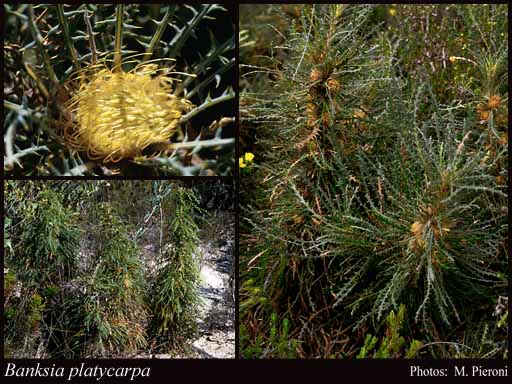- Reference
- Austral.Syst.Bot. 20:69 (2007)
- Conservation Code
- Not threatened
- Naturalised Status
- Native to Western Australia
- Name Status
- Current
Erect, columnar, non-lignotuberous shrub, 0.2-1 m high. Fl. cream-yellow-orange, May to Aug. White, grey/brown sand, often with gravel & over laterite.

Scientific Description
Shrubs, 0.50-0.80 m high; branchlets hairy. Leaves petiolate, alternate, 45-135 mm long, 6-15 mm wide, hairy; petiole 8-15 mm long; lamina flat, once divided, pinnately divided, deeply divided, with 15-25 lobes on each side, the margins recurved. Inflorescences silky (with soft, shiny and appressed hairs) or villous (with soft, shaggy, weak and straight hairs), cream, yellow or brown; innermost bracts 12-15 mm long, hairy. Perianth 10-16 mm long, hairy, all over, limb apex silky (with soft, shiny and appressed hairs) or villous (with soft, shaggy, weak and straight hairs), without awns; pistil 16-22 mm long, curved, style glabrous. Follicles hairy, pilose, ovate, 11-13 mm long. Flowers in May, June or July. Occurs in the South-west (SW) Botanical Province(s), in the Geraldton Sandplains (GS), Swan Coastal Plain (SWA) or Jarrah Forest (JF) IBRA subregion(s). : Conservation code Priority Four (P4).
Distribution
- IBRA Regions
- Geraldton Sandplains, Jarrah Forest, Swan Coastal Plain.
- IBRA Subregions
- Dandaragan Plateau, Lesueur Sandplain, Northern Jarrah Forest, Perth.
- Local Government Areas (LGAs)
- Carnamah, Coorow, Dandaragan, Gingin, Three Springs, Victoria Plains.